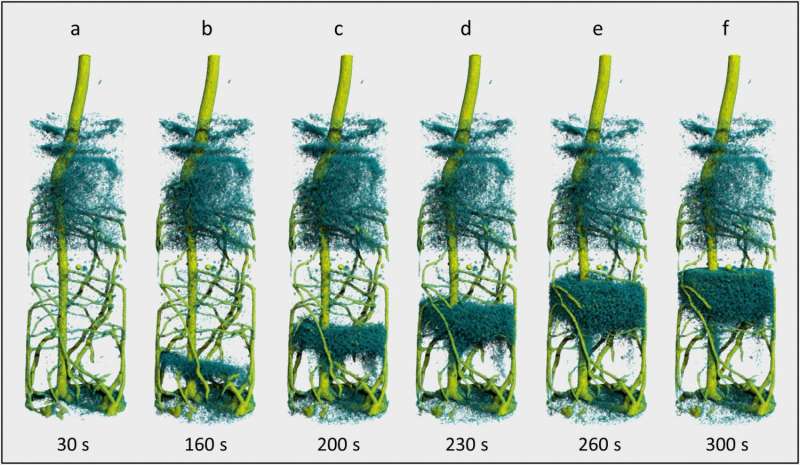User research at BER II: Lupin roots observed in the act of drinking

Lupins produce colourful blossoms and nutritious beans. Just how these plants draw water has now for the first time been observed in three dimensions by a University of Potsdam team at the HZB-BER II neutron source in Berlin. They improved the temporal resolution of neutron tomography more than onehundred-fold and obtained a detailed 3D image every ten seconds. This ultrafast neutron tomography is suitable as well for analyses of dynamic processes in other materials.
Soil scientists led by Prof. Sascha Oswald from the University of Potsdam regularly conduct experiments at the BER II neutron source. This is because neutrons are superbly suited for observing the transport of water in soil and plant roots. In addition, the scientists also use deuterated heavy water that can be differentiated from ordinary water extremely well by neutrons. At least an hour of instrument time was previously necessary to generate a detailed three-dimensional mapping of the water distribution using neutron tomography at the CONRAD-2 imaging facility. The scientists have now broken with the paradigm that a subject should move as little as possible during the recording process, as is also the rule in photography. They permitted the lupin plants to rotate slowly but completely within a cylinder of soil while a successive series of extremely brief images were made. The team is now able to conduct this type of 3D mapping during a period of only ten seconds thanks to precision technical modifications in CONRAD-2 carried out by HZB experts Dr. Nikolay Kardjilov and Dr. Ingo Manke.
These modifications enabled the researchers from Univ. of Potsdam to observe for the first time in 3D how water rises upwards in the soil and thus how the roots absorb it. "At this temporal resolution it had only been possible thus far to look through a stationary sample cross-section, i.e. in 2D", explains Dr. Christian Tötzke, first author of the study that has now been published in Scientific Reports. The findings extend our understanding of the interactions between roots and soil, which could even affect breeding and cultivation of these kinds of agricultural crops. And the new recording technology, which is a good 100-times faster than before, could also enable fast processes in other samples to be observed in real time, such as in fuel cells, batteries, and construction materials.
More information: Christian Tötzke et al, Capturing 3D Water Flow in Rooted Soil by Ultra-fast Neutron Tomography, Scientific Reports (2017). DOI: 10.1038/s41598-017-06046-w
Journal information: Scientific Reports
Provided by Helmholtz Association of German Research Centres

















